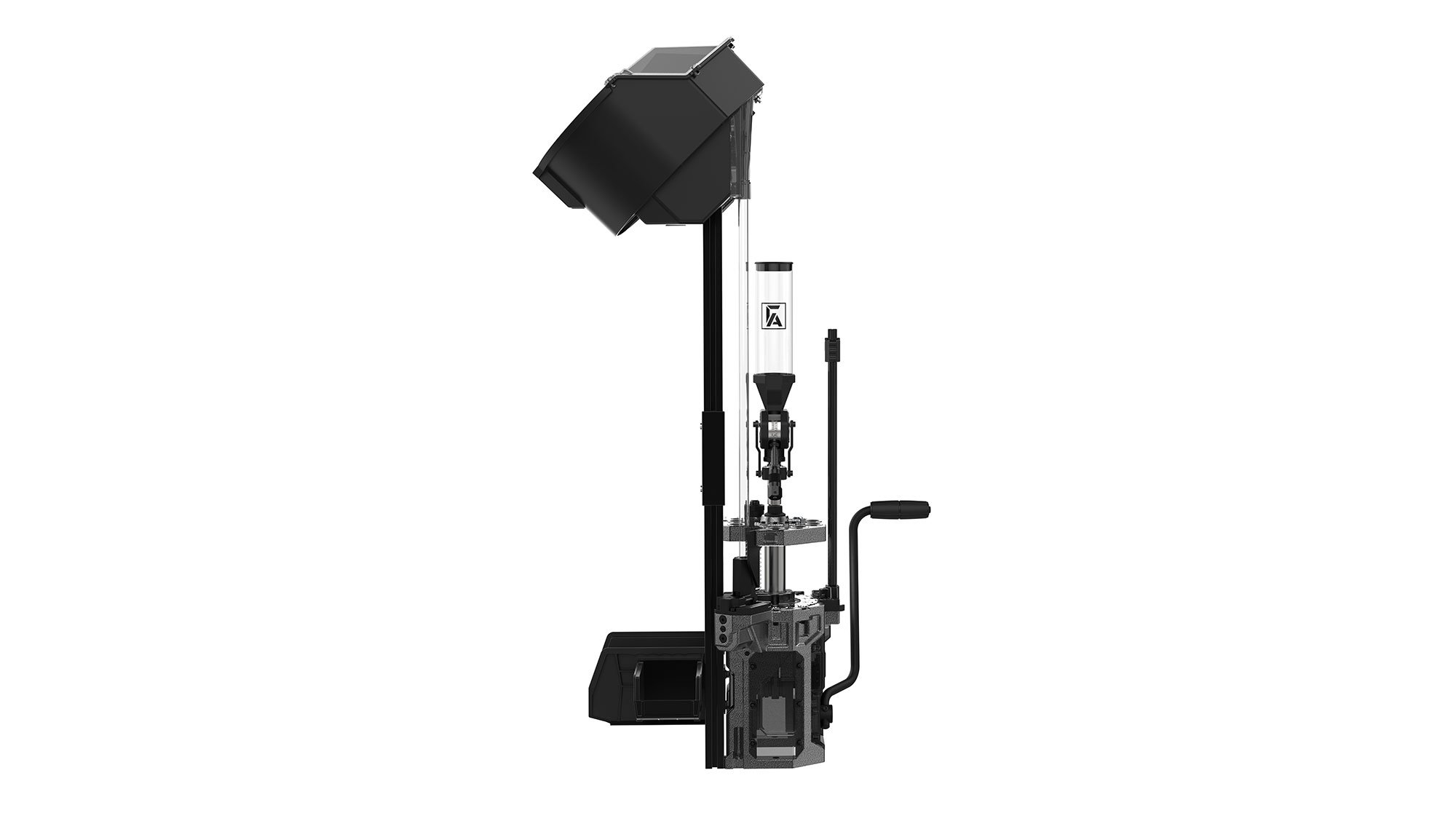Bronze Lifetime
- Messages
- 229
- Reactions
- 473
I'm pretty experienced with reloading necked rifle cartridges such as .30-06, 308WIN, 223REM, 6.5 Creedmoor and 30-30 having reloaded hundreds or thousands of each.
Now into straight-wall pistol cartridges including .45 Auto and will soon be adding 9mm Luger. Currently loading cast bullets for .45 Auto. Will be loading jacketed bullets for 9mm.
I load rifle cartridges one at a time in a single stage press. For pistol, volume requirements demand using a progressive press, which is also new to me.
* Powder dispensing reliability in a progressive press. Any tricks or advise to ensure powder is dispensing consistently before starting to load away? I had to pull the bullets on about 80 rounds because the powder weight was off, even though I measured several pours before going at it. Currently using a Hornady progressive press and Hornady Bench Rest powder dispenser.
* Belling and crimping. This has to affect the life of the case (split lips). Any tips besides common-sense approach of belling and crimping as little as needed?
* Does straight-wall pistol brass stretch much over its lifespan?
* Mixing brass by brand and/or # of firings. Rifle brass I keep sorted by both brand and # of firings. Is this an issue with pistol brass?
* Differences in brass weight. Not trying to suggest pistol brass needs to be sorted by weight like a bench rest shooter might. But I have noticed .45 Auto cases with military/police head stamps (such as WCC) can be a lot heavier, suggesting a smaller interior volume. Has anyone experienced unacceptable inconsistencies in muzzle velocity due to this?
* What's the real story on crimping to help get consistent muzzle velocities? When pulling some bullets (see above) I used a hammer-like inertia puller. Although all were crimped in the same batch there were noticeable differences in the # of blows to remove the bullet. The bullets were pulled from a Heinz57 mix of brass. Seems the crimp on a case with maybe slightly thicker wall, or more work-hardened brass, would have more holding power. (Note: I never crimp rifle brass so crimping is new to me.)
* NATO 9mm. Anyone have issues with seating new primers due to crimped primer pockets? (This is a known issue with 5.56 and 7.62 NATO.)
* Small primer .45 Auto. I know when 308WIN is manufactured to use small primers it allows for higher pressures before blowing primers. Some long-range shooters prefer it for that reason. But .45 Auto is anything but a high-pressure pistol round. So why small primers in .45 Auto? Why? Why? Why?

* Any other gotcha's an experienced rifle reloader might not know about when reloading pistol?
Now into straight-wall pistol cartridges including .45 Auto and will soon be adding 9mm Luger. Currently loading cast bullets for .45 Auto. Will be loading jacketed bullets for 9mm.
I load rifle cartridges one at a time in a single stage press. For pistol, volume requirements demand using a progressive press, which is also new to me.
* Powder dispensing reliability in a progressive press. Any tricks or advise to ensure powder is dispensing consistently before starting to load away? I had to pull the bullets on about 80 rounds because the powder weight was off, even though I measured several pours before going at it. Currently using a Hornady progressive press and Hornady Bench Rest powder dispenser.
* Belling and crimping. This has to affect the life of the case (split lips). Any tips besides common-sense approach of belling and crimping as little as needed?
* Does straight-wall pistol brass stretch much over its lifespan?
* Mixing brass by brand and/or # of firings. Rifle brass I keep sorted by both brand and # of firings. Is this an issue with pistol brass?
* Differences in brass weight. Not trying to suggest pistol brass needs to be sorted by weight like a bench rest shooter might. But I have noticed .45 Auto cases with military/police head stamps (such as WCC) can be a lot heavier, suggesting a smaller interior volume. Has anyone experienced unacceptable inconsistencies in muzzle velocity due to this?
* What's the real story on crimping to help get consistent muzzle velocities? When pulling some bullets (see above) I used a hammer-like inertia puller. Although all were crimped in the same batch there were noticeable differences in the # of blows to remove the bullet. The bullets were pulled from a Heinz57 mix of brass. Seems the crimp on a case with maybe slightly thicker wall, or more work-hardened brass, would have more holding power. (Note: I never crimp rifle brass so crimping is new to me.)
* NATO 9mm. Anyone have issues with seating new primers due to crimped primer pockets? (This is a known issue with 5.56 and 7.62 NATO.)
* Small primer .45 Auto. I know when 308WIN is manufactured to use small primers it allows for higher pressures before blowing primers. Some long-range shooters prefer it for that reason. But .45 Auto is anything but a high-pressure pistol round. So why small primers in .45 Auto? Why? Why? Why?
* Any other gotcha's an experienced rifle reloader might not know about when reloading pistol?












